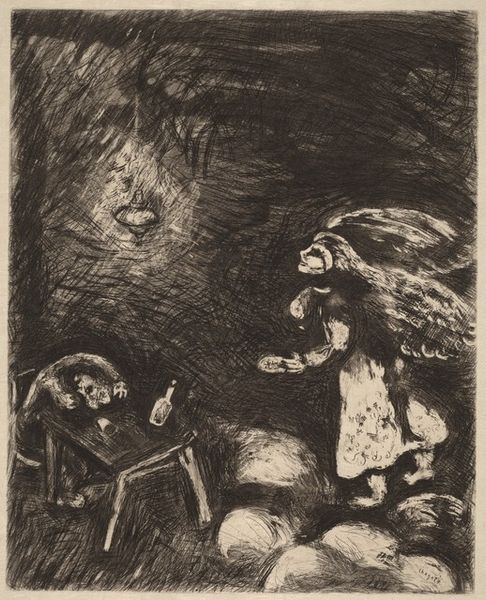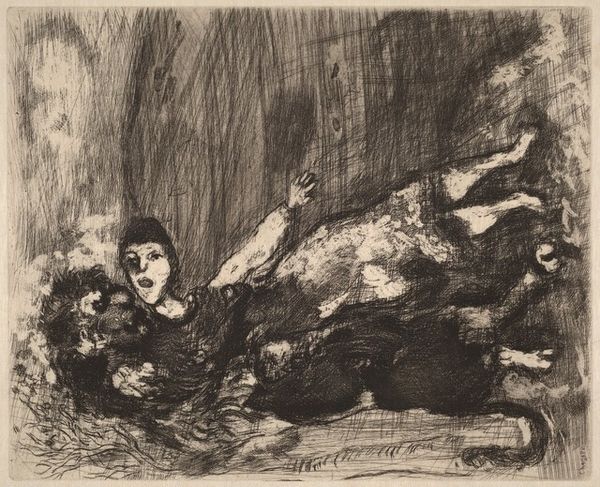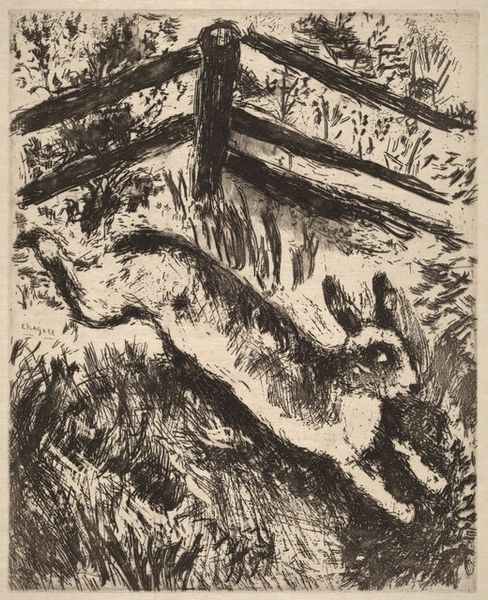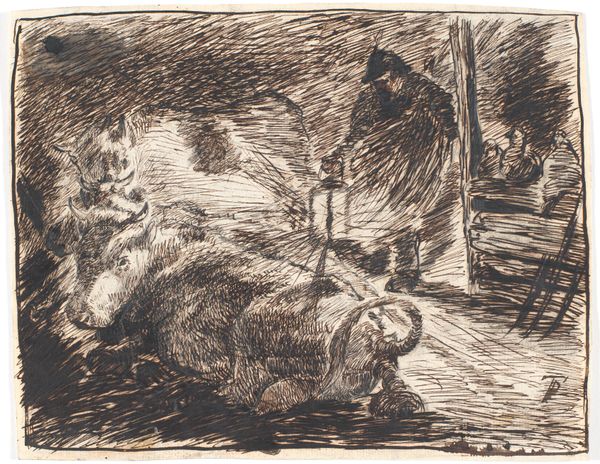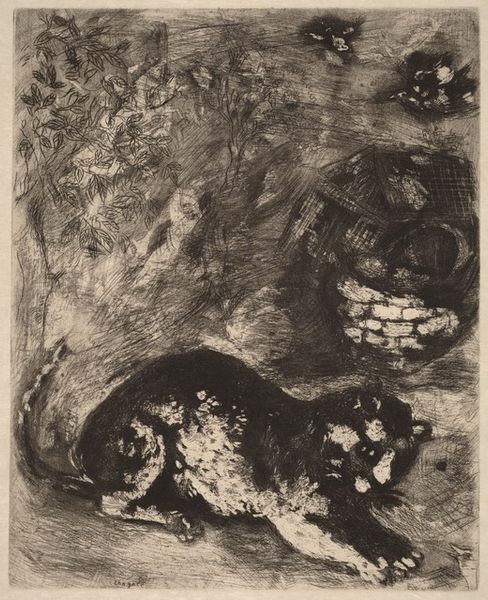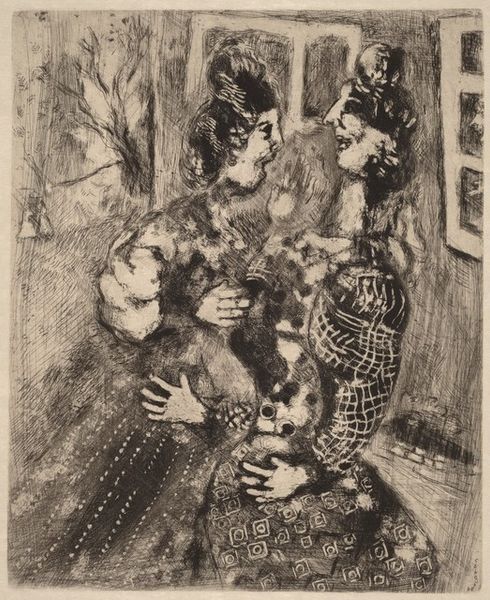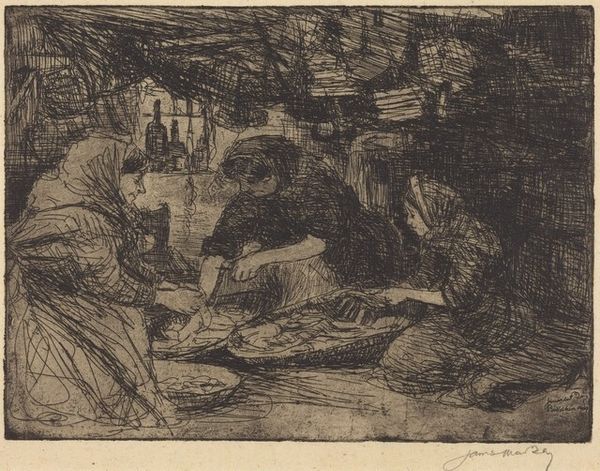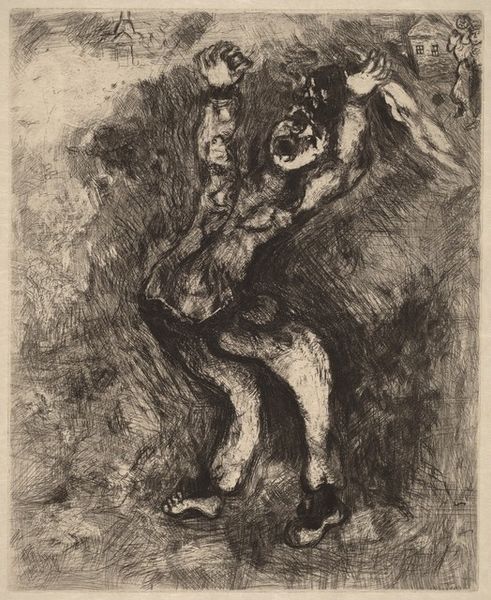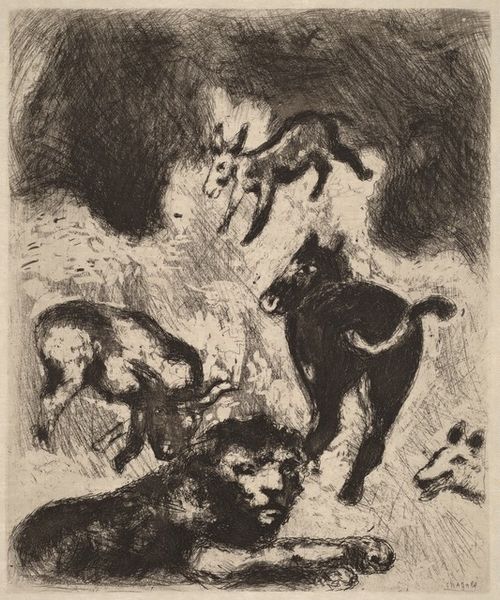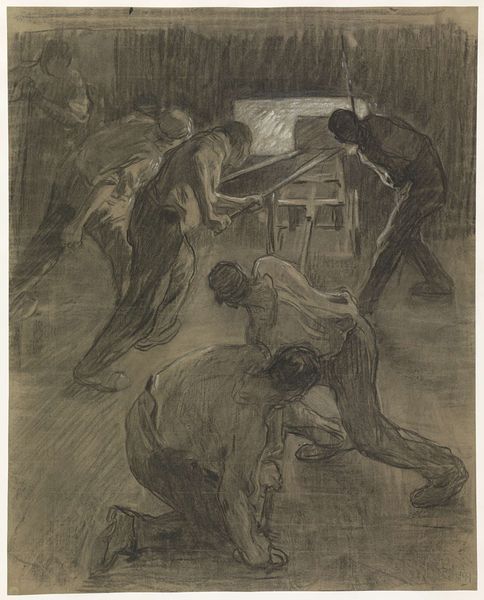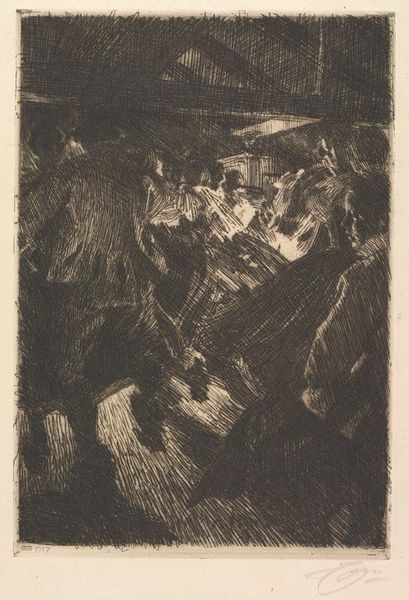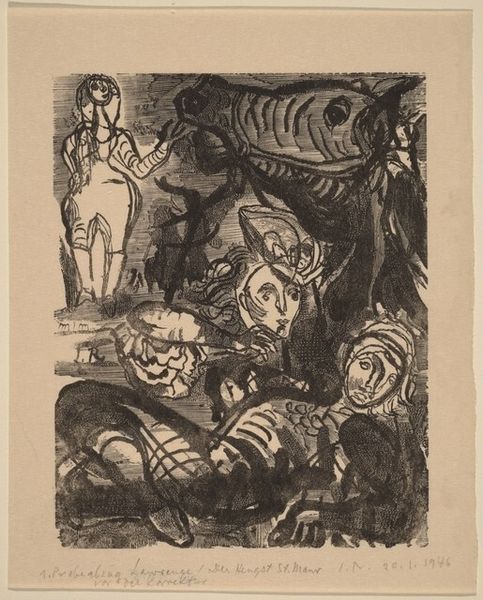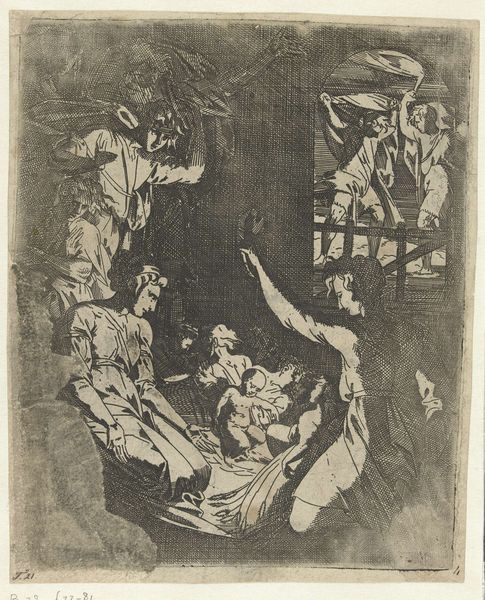
print, etching
#
narrative-art
#
shading to add clarity
# print
#
etching
#
expressionism
#
limited contrast and shading
#
history-painting
Copyright: National Gallery of Art: CC0 1.0
Curator: This is Marc Chagall's etching, "The Miser Who Lost His Treasure," created between 1927 and 1930. It’s a fairly small print. Editor: Gosh, my first thought is how…dark it is. Not just visually, but the mood, too. Like a shadowy nightmare glimpsed under the bed. Are those grasping hands I see? Curator: Those details definitely feed into a sense of unease. Chagall uses darkness to great effect here, obscuring forms yet highlighting certain textures. Consider the symbolism inherent in depicting the miser's downfall in near-total shadow. What is hidden and lost can also mean what's morally obscured or bankrupt. Editor: Exactly. The face of the standing figure looks grotesque; are we meant to assume this is an embodiment of greed and despair? The figures have an almost theatrical exaggerated pose. Like a dark mime play. Is that a window top-right; a chink of light but barely present? Curator: It could be interpreted as a tiny window. What fascinates me is how Chagall pulls from his deep well of Jewish folklore and Russian culture. The miser is a recurring figure—often portrayed negatively—a warning about the corrupting power of material wealth. Editor: It's such an Expressionist rendering of paranoia, I get it: the man is utterly alone, the dark is pressing in on him. It almost feels as if the money itself has become monstrous, a separate entity, mocking him in his ruin. Curator: It resonates so profoundly with our modern anxieties. The visual motifs used point to universal experiences about wealth, obsession, and potential downfall. It's also thought that the image takes on elements of Yiddish Theatre from the 1920’s in Europe. Editor: So, it's not just about individual avarice, but societal anxieties as well? Interesting how the lack of detail kind of amps up the discomfort. I think there’s a broader cautionary tale woven into that intense darkness. Something so archetypal… Curator: Precisely! By utilizing such recognizable themes through distinct stylistic choices and by embedding such powerful cultural memory, Chagall achieves that kind of resonance, doesn't he? Editor: I agree completely, yes. The print is stark, isn't it? Bleak…and brutally affecting, almost one hundred years later.
Comments
No comments
Be the first to comment and join the conversation on the ultimate creative platform.
